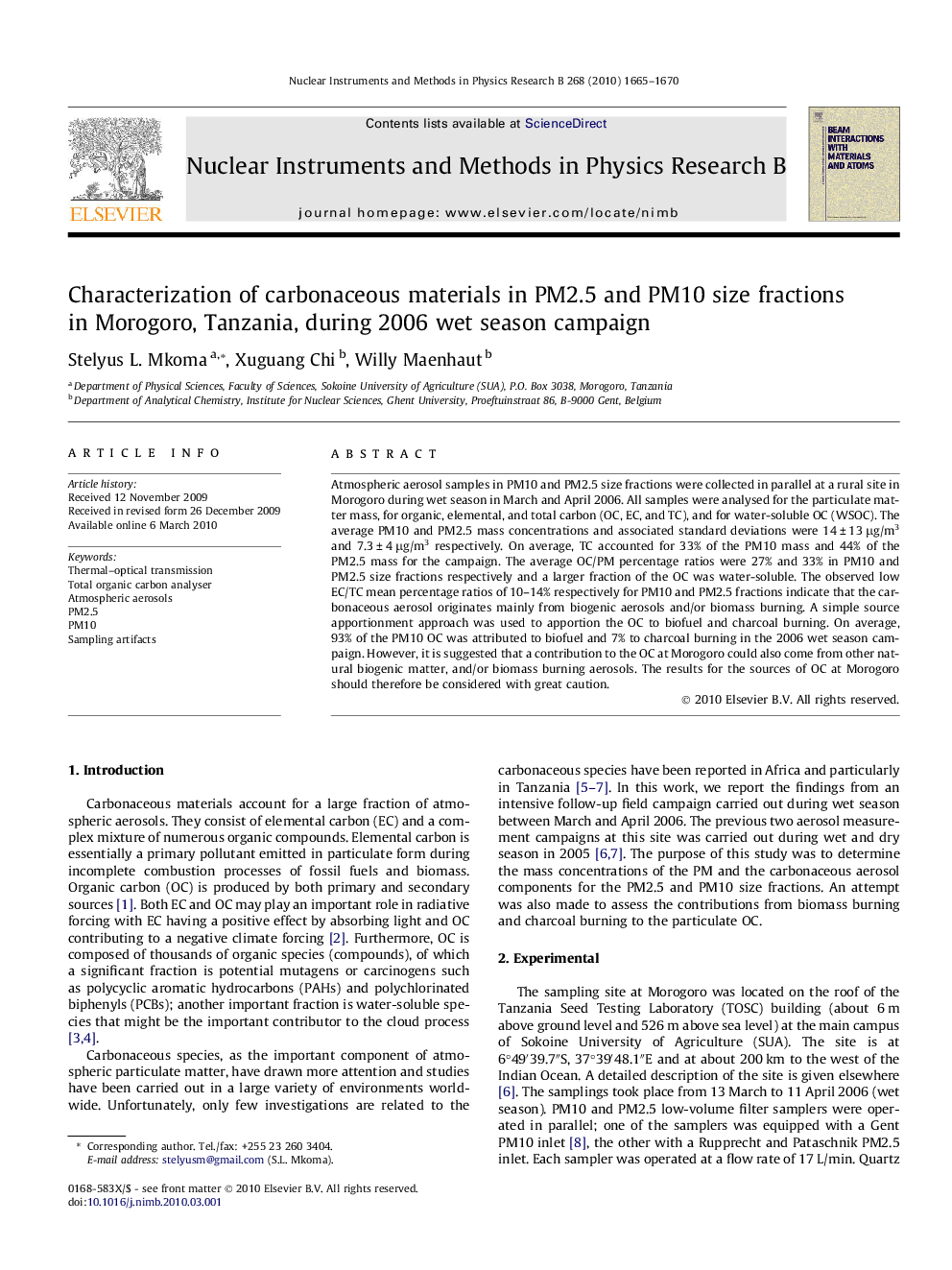| Article ID | Journal | Published Year | Pages | File Type |
|---|---|---|---|---|
| 1684451 | Nuclear Instruments and Methods in Physics Research Section B: Beam Interactions with Materials and Atoms | 2010 | 6 Pages |
Atmospheric aerosol samples in PM10 and PM2.5 size fractions were collected in parallel at a rural site in Morogoro during wet season in March and April 2006. All samples were analysed for the particulate matter mass, for organic, elemental, and total carbon (OC, EC, and TC), and for water-soluble OC (WSOC). The average PM10 and PM2.5 mass concentrations and associated standard deviations were 14 ± 13 μg/m3 and 7.3 ± 4 μg/m3 respectively. On average, TC accounted for 33% of the PM10 mass and 44% of the PM2.5 mass for the campaign. The average OC/PM percentage ratios were 27% and 33% in PM10 and PM2.5 size fractions respectively and a larger fraction of the OC was water-soluble. The observed low EC/TC mean percentage ratios of 10–14% respectively for PM10 and PM2.5 fractions indicate that the carbonaceous aerosol originates mainly from biogenic aerosols and/or biomass burning. A simple source apportionment approach was used to apportion the OC to biofuel and charcoal burning. On average, 93% of the PM10 OC was attributed to biofuel and 7% to charcoal burning in the 2006 wet season campaign. However, it is suggested that a contribution to the OC at Morogoro could also come from other natural biogenic matter, and/or biomass burning aerosols. The results for the sources of OC at Morogoro should therefore be considered with great caution.
